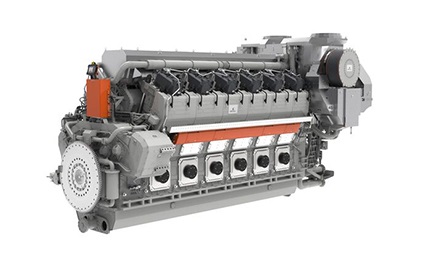Engines for Africa: Your Ultimate Car Components Store for High Quality Automobile Elements
The Mission for Ultimate Driving Power: Examining the Peak of Engine Efficiency and Technological Developments in the Automotive Sector
In the realm of auto engineering, the pursuit of optimum driving power has actually been a ruthless quest that has unfolded with the development of engine style and the assimilation of innovative innovations. From the meticulous workmanship of burning engines to the fast innovations in electrical propulsion systems, the vehicle market stands at the cusp of a brand-new age characterized by unmatched efficiency abilities.
Advancement of Engine Layout

In addition, the combination of turbocharging and turbo charging technologies has changed engine design by boosting power without significantly enhancing engine dimension. These forced induction systems press the consumption air, enabling more fuel to be combusted, thereby generating higher power output from a smaller engine. This advancement has actually been specifically essential in boosting the efficiency of smaller displacement engines while preserving fuel effectiveness standards.

Performance-Enhancing Fuel Technologies
The execution of advanced gas technologies has actually considerably added to enhancing engine performance in contemporary vehicles. Biofuels, obtained from eco-friendly sources like corn, algae, or sugarcane, deal boosted and reduced exhausts engine performance. In addition, gas additives and cleaning agents are being created to clean engine elements, maximize combustion, and minimize rubbing, thereby improving total lorry efficiency.
Developments in Electric Propulsion
Substantial strides in electrical propulsion technology have transformed the vehicle sector, leading the way for a brand-new era of reliable and lasting transportation. Electric cars (EVs) are acquiring popularity because of their environmental benefits and improvements in battery modern technology, enabling longer driving ranges and shorter charging times. Suppliers are spending greatly in research and development to enhance the performance of electric propulsion systems, concentrating on increasing power outcome, enhancing energy effectiveness, and minimizing general weight.
One remarkable breakthrough in electrical propulsion is the advancement of sophisticated electrical motors that deliver higher torque and power thickness, leading to improved velocity and general driving performance. Additionally, regenerative stopping systems have actually been fine-tuned to capture and save power throughout deceleration, further boosting the performance of EVs.
In addition, the assimilation of wise technologies, such as artificial knowledge and predictive analytics, is maximizing the management of electrical propulsion systems, making certain ideal performance under numerous driving conditions. These advancements in electrical propulsion are improving the automotive landscape, driving the sector towards an extra sustainable and energized future.
Effect of Computational Fluid Dynamics
With advancements in electric propulsion pressing the limits of auto technology, the integration of Computational Fluid Characteristics is playing a pivotal function in enhancing aerodynamic efficiency and improving general efficiency in automobile layout. Computational Liquid Characteristics (CFD) includes the use of computer system simulations to assess the circulation of air around a car, making it possible for engineers to anticipate just how design modifications will impact aerodynamics without the need for pricey physical models. By properly modeling air movement patterns, CFD permits the refinement of pop over here lorry shapes to decrease drag, improve air conditioning, and boost stability.
CFD makes it possible for designers to enhance airflow around elements such as radiators, engine bays, and wheel wells, contributing to continue reading this improved efficiency and total driving experience. In final thought, the combination of Computational Fluid Characteristics represents a significant action onward in the mission for best driving power and efficiency in the automotive sector.
Future Patterns in Engine Development
In the dynamic landscape of auto engineering, innovative improvements are shaping the future trajectory of engine technology. The future of engine style is marked by a solid emphasis on performance, effectiveness, and sustainability. Producers are significantly concentrating on developing engines that not just provide high power results however also focus on environmental responsibility by minimizing discharges and enhancing fuel efficiency.
One noticeable fad in engine advancement is the increase of electrification. Hybrid and electric powertrains are getting traction as viable alternatives to conventional combustion engines. These innovations supply the potential for considerable reductions in carbon discharges and raised energy efficiency, straightening with global efforts to battle climate modification.
In addition, developments in materials scientific research and production methods are making it possible for the production of lighter and a lot more sturdy engine components. This change in the direction of lightweight products such as carbon fiber and aluminum alloys adds to boosted performance and fuel economic situation.
Conclusion
To conclude, the search of supreme driving power in the auto sector remains to drive advancements in engine design, fuel modern technologies, electric propulsion, and computational fluid dynamics. The evolution of these innovations is shaping the future of engine advancement, leading the way for much more powerful and effective automobiles (engines for africa). As the sector proceeds to press the borders of what is feasible, we can expect to see a lot more revolutionary advancements in the pursuit for peak efficiency
One of the key milestones in engine layout evolution is the shift from traditional carbureted engines to modern fuel-injected systems. By specifically metering the gas shipment to each cylinder, fuel-injected engines optimize burning, resulting in far better performance and reduced ecological effect.
Moreover, the combination of turbocharging and supercharging modern technologies has actually you can check here transformed engine design by enhancing power without dramatically boosting engine size (engines for africa).The implementation of innovative fuel technologies has actually substantially contributed to improving engine performance in modern-day automobiles. Additionally, gas additives and cleaning agents are being developed to clean engine parts, enhance burning, and decrease rubbing, thus boosting general car efficiency